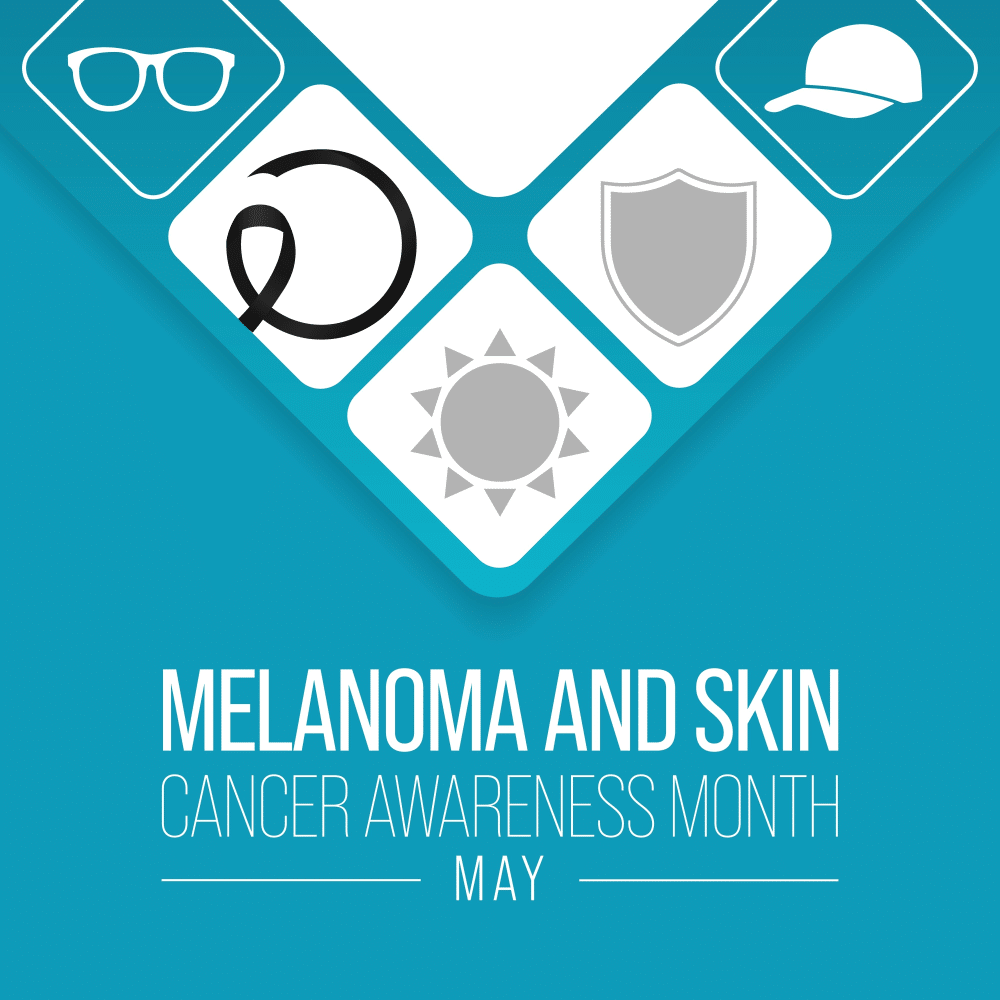May is skin cancer awareness month. Studies show that skin cancer is the most commonly diagnosed cancer in the U.S. According to a study published by the American Academy of Dermatology (AAD), an estimated 9,500 Americans are diagnosed with skin cancer every day. It’s worth noting that there is more than one kind of skin cancer, and each can ultimately become fatal if not treated promptly. Here is what to know about the different types of skin cancer and their symptoms.
The 3 Types of Skin Cancer
The three more common types of skin cancer include basal cell carcinoma, squamous cell carcinoma, and melanoma. All of these cancers can occur on any part of the body, but they each differ in terms of appearance and associated symptoms. A board-certified dermatologist can assess any unusual growth and help you determine what kind of cancer it may be using a biopsy. Here is a brief overview of the three types of skin cancer and what they look like.
Basal Cell Carcinoma (BCC)
This particular type of skin cancer appears on areas of the skin frequently exposed to the sun’s harmful ultraviolet (UV) rays, namely the face, chest, arms, scalp, and neck. Basal cell carcinoma can appear like a pink, scaly patch or a pink, pearly bump. Sometimes, it can look like a scar, a sore, or even a pimple that won’t go away. As the disease progresses, most people report experiencing pain, itching, swelling, bleeding, and other symptoms.
Squamous Cell Carcinoma (SCC)
Like basal cell carcinoma, squamous cell carcinoma attacks parts of the skin frequently exposed to UV rays from the sun or tanning beds. That includes the face, scalp, and neck; it may also occur on the ears, lips, extremities, chest, and hands. Symptoms of squamous cell carcinoma generally include the following:
- Horn-shaped growths protruding from the skin
- Scaly, reddish patches of skin
- Rough, pink bumps
- Wart-like growths
Melanoma
Melanoma can appear anywhere on the body – even areas that don’t often experience sunlight. Generally speaking, melanoma usually meets one or more of the ABCDE criteria. Asymmetry, irregular Borders, Color variegation, a size greater than 6mm Diameter, and Evolution or change of a mole might be characteristics. Other reasons to have your pigmented lesion checked include:
- Moles that bleed easily
- Small pink, white, red, or blue lesions within a mole
- Darkening moles
- Black moles
- black/dark spot or streak under a fingernail or toenail
- A mole that looks different than your others “Ugly Duckling Sign”
Schedule Your Consultation
Skin cancer, much like other cancers, can be deadly. However, it also has an extremely high survival rate when detected early. This month, we encourage everyone to perform a self-skin check and meet with our team of board-certified dermatologists and physician assistants if you notice any abnormal growths or spots. Please schedule a consultation today at our Marlton, Camden, and Hammonton locations to meet with our team and learn more about your next steps.
